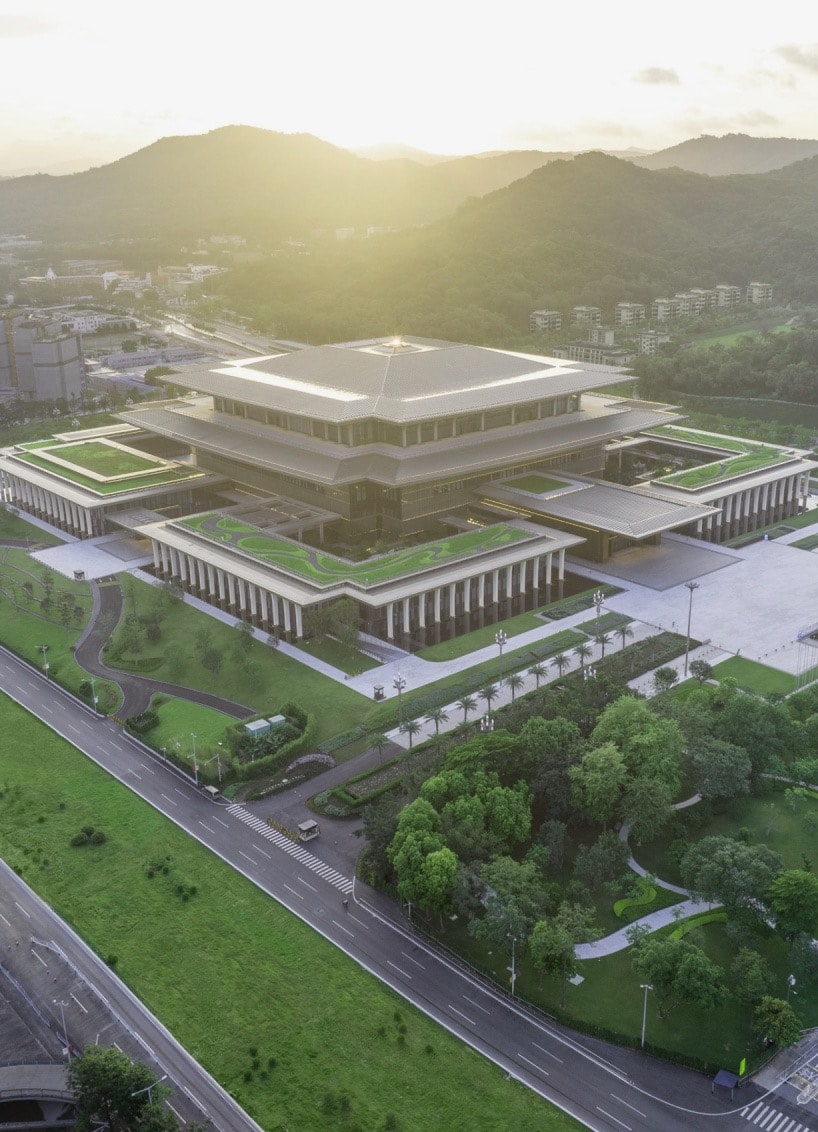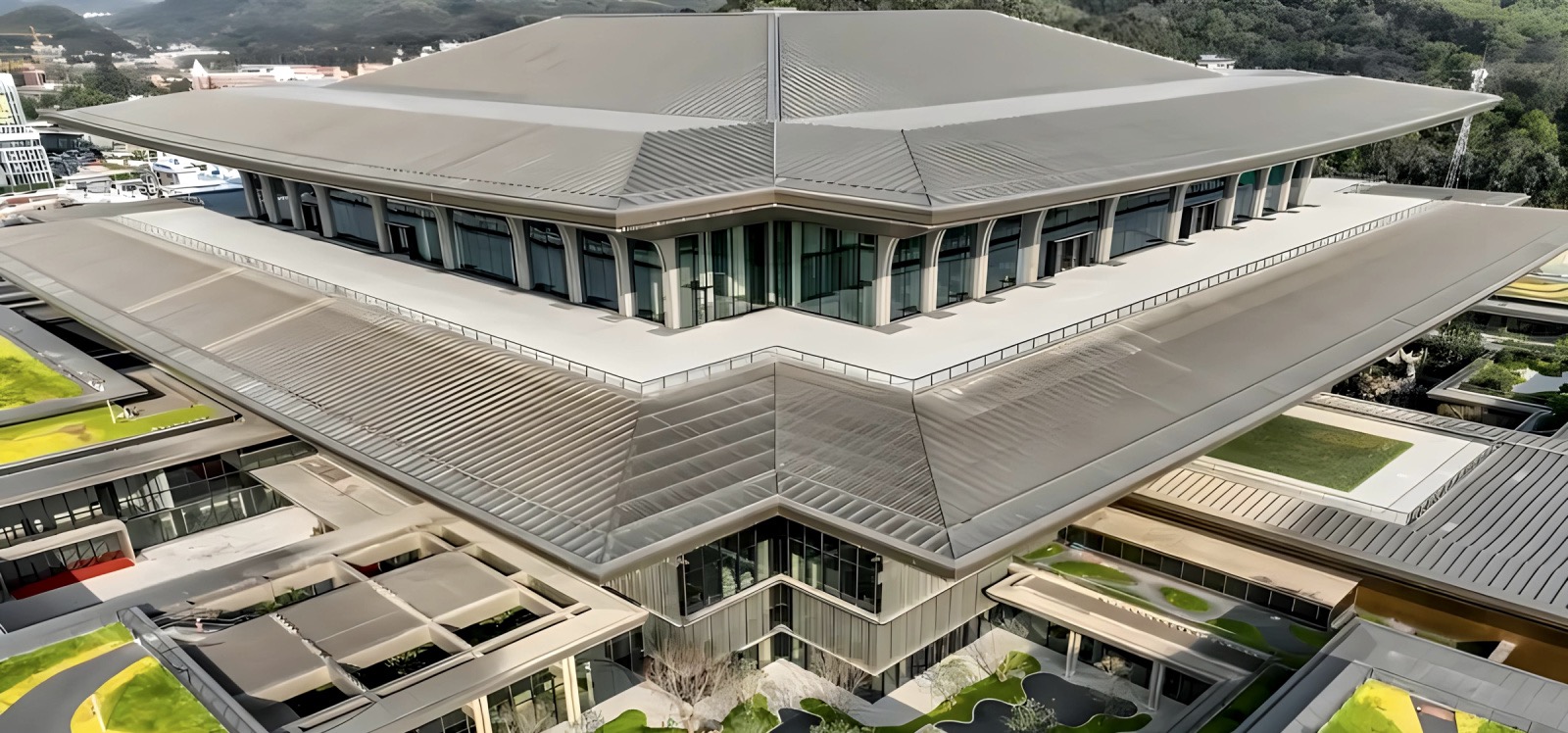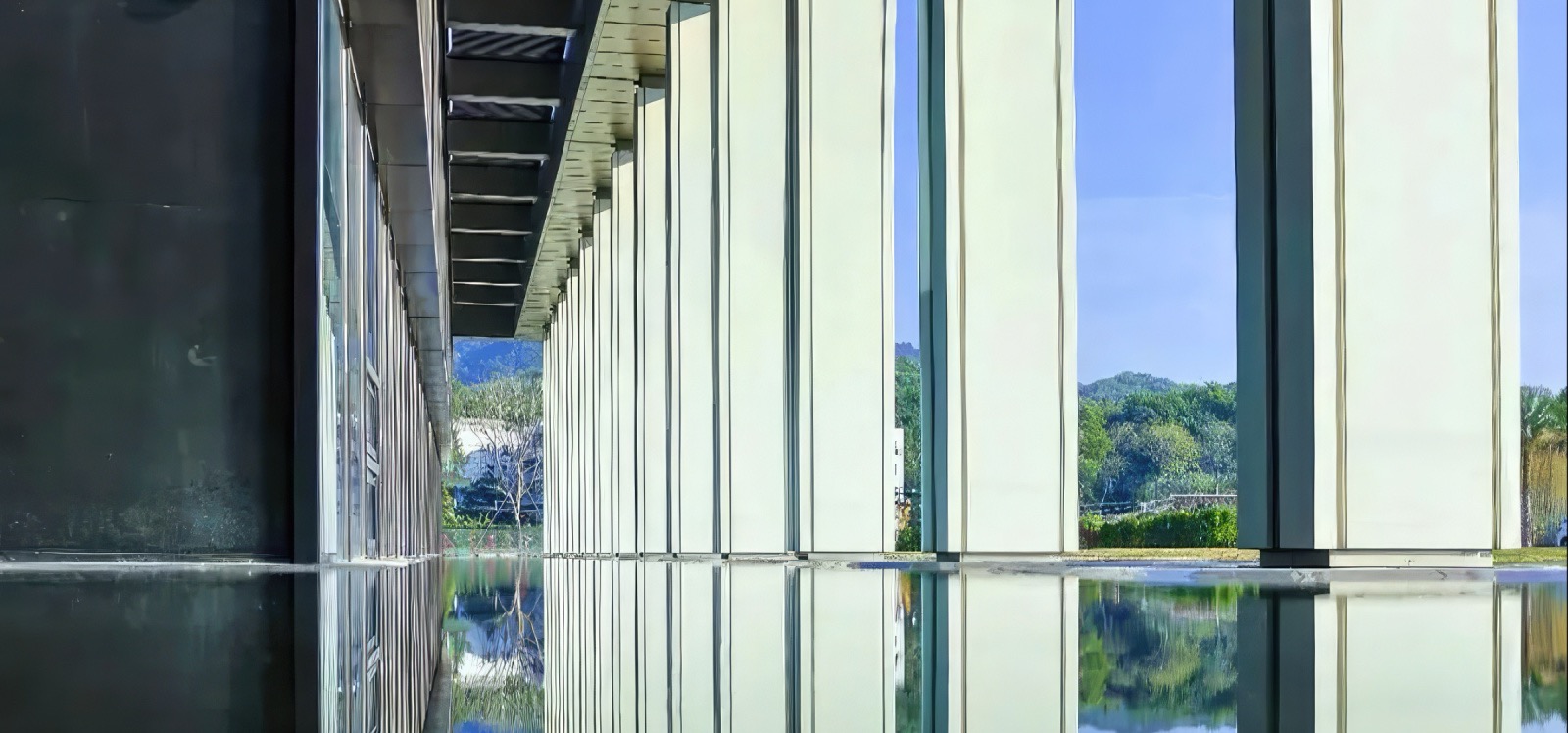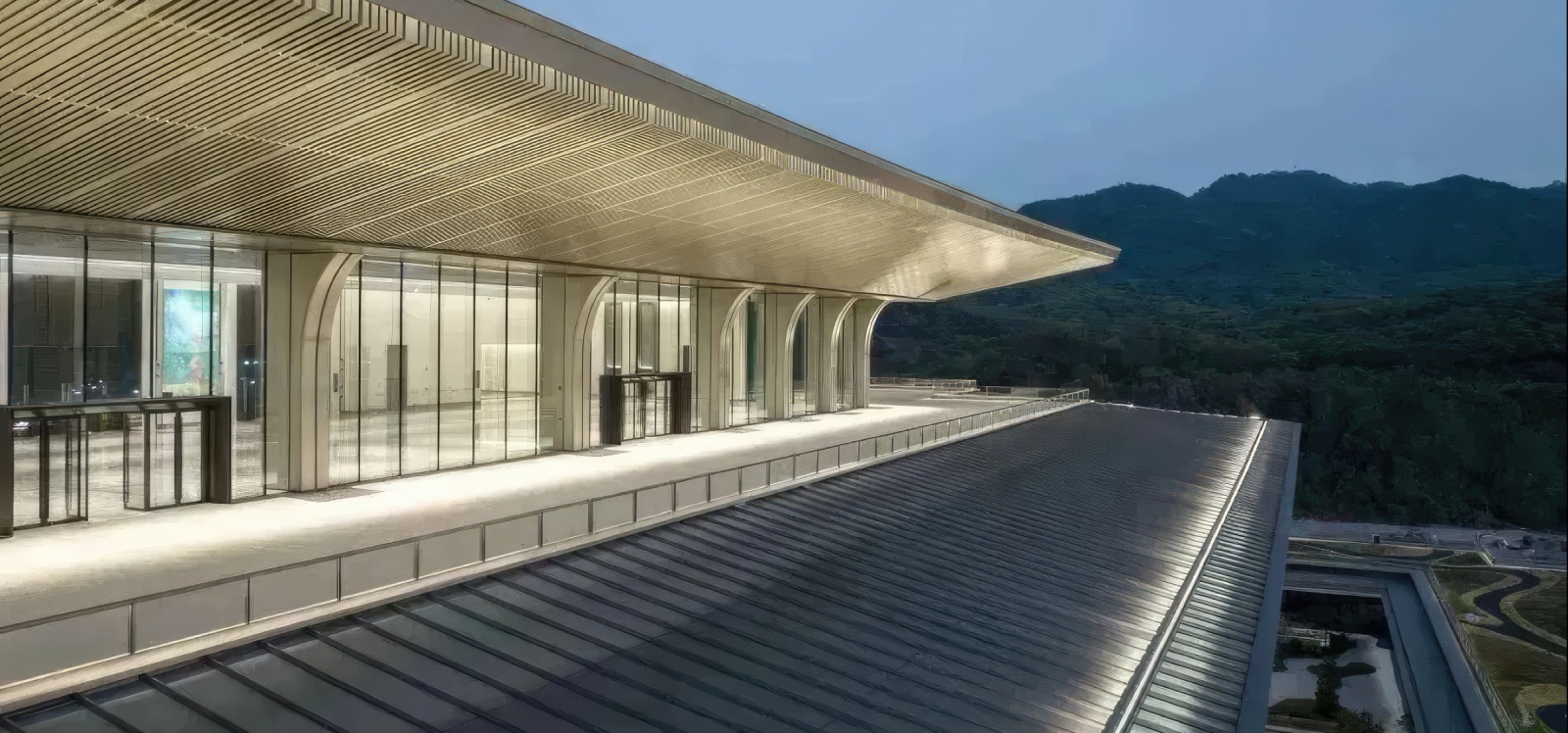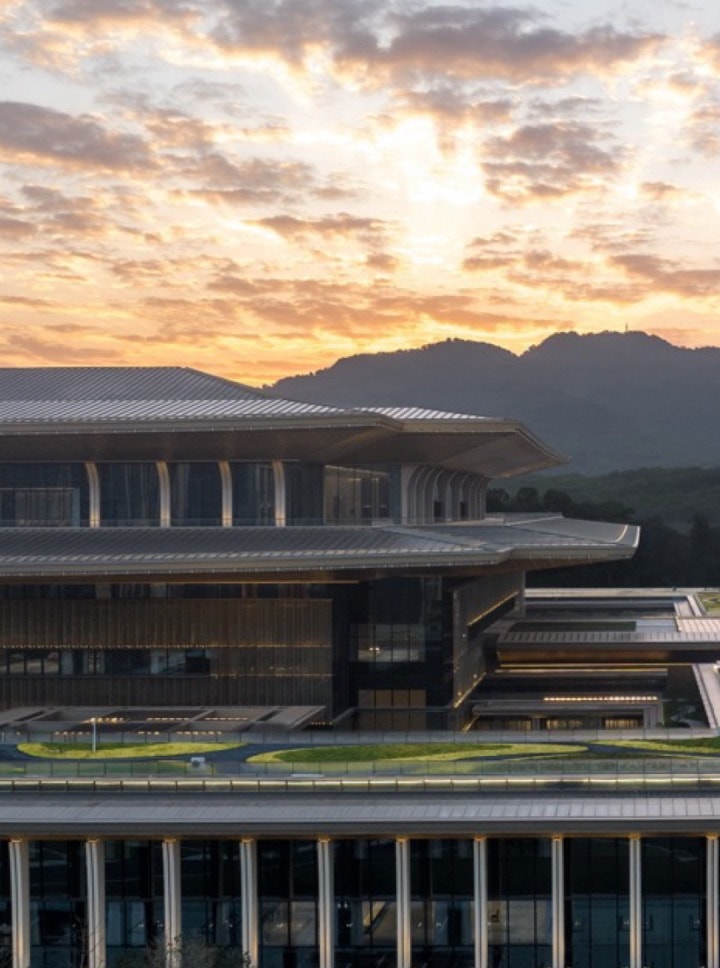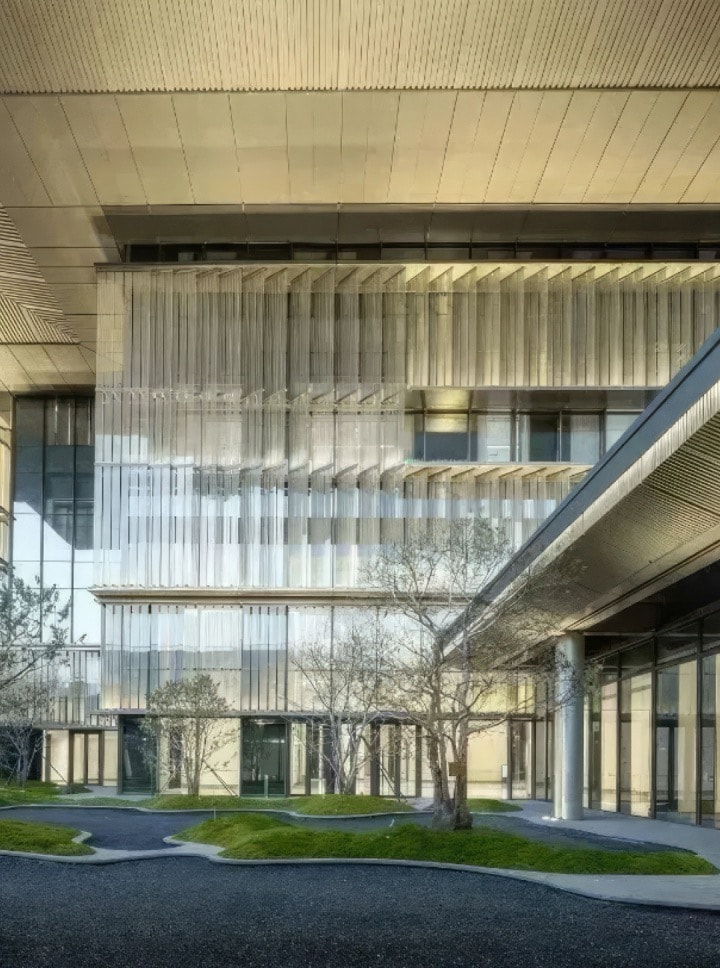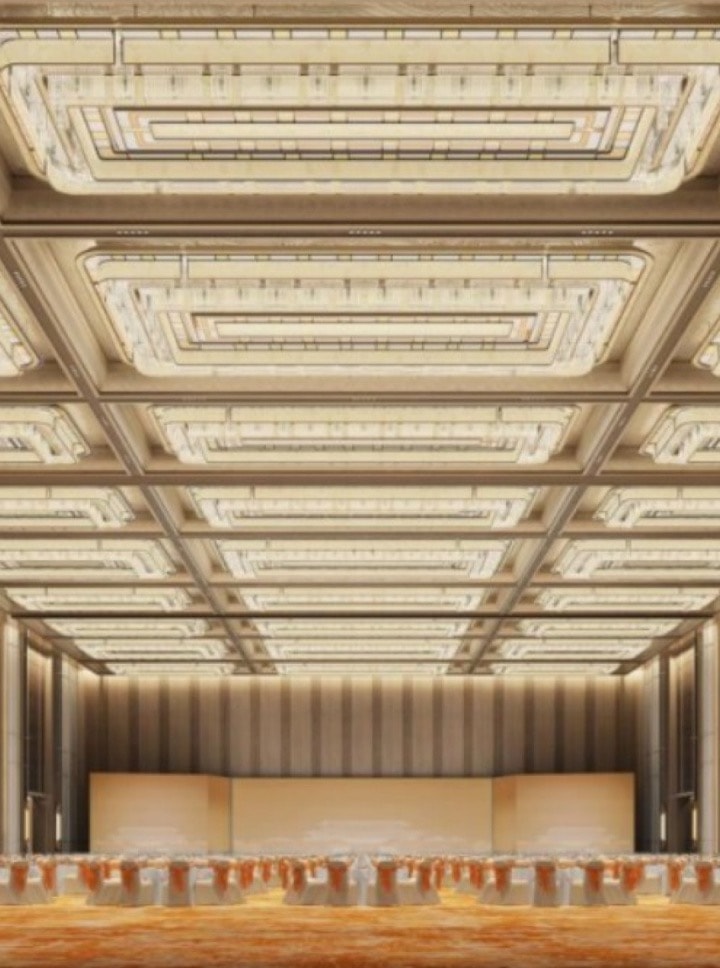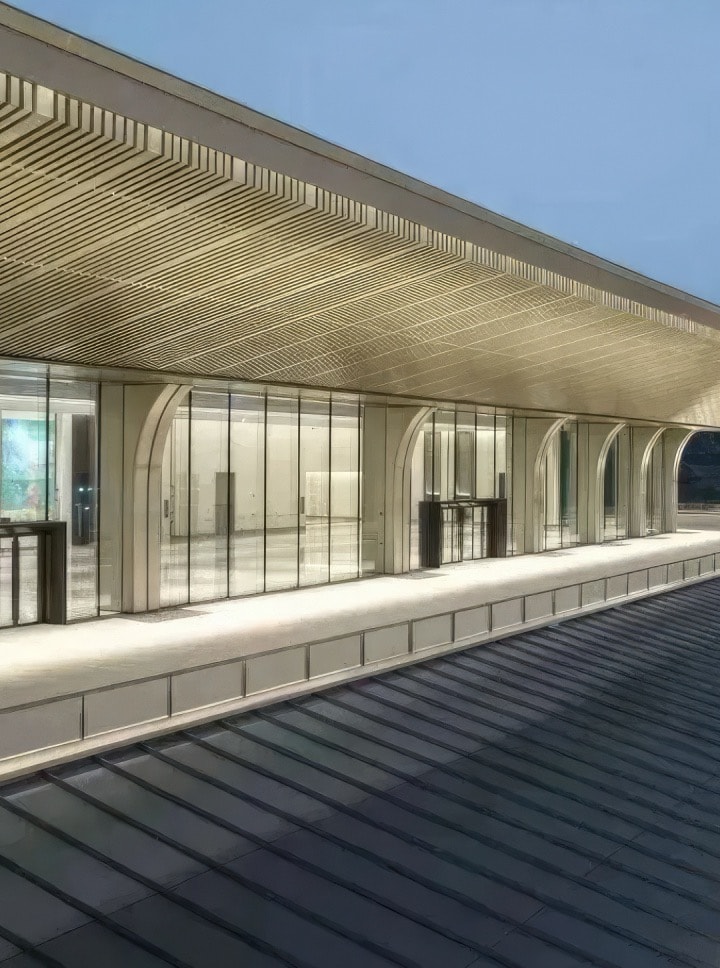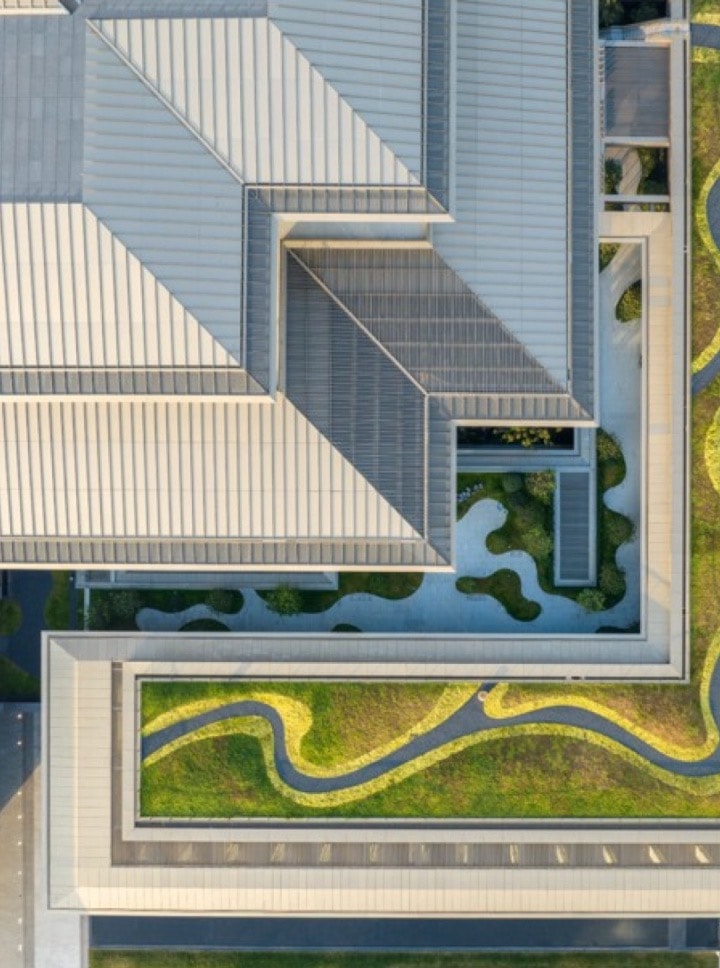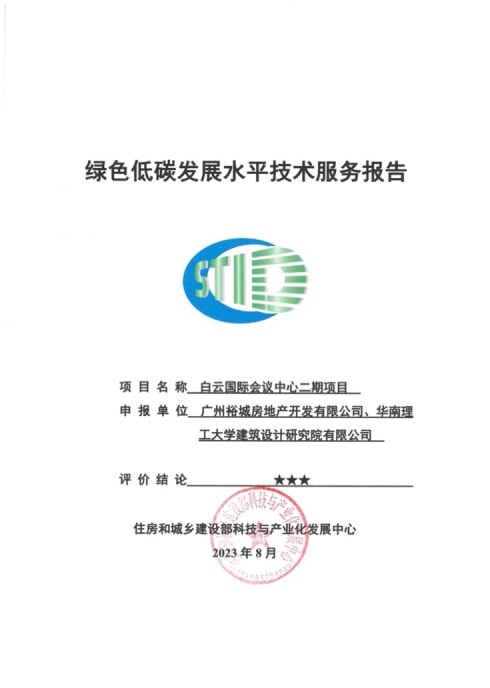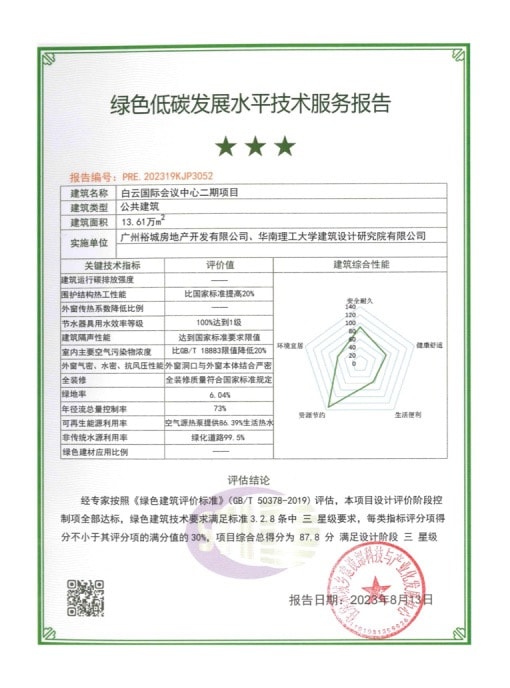Baiyun International Convention Centre Phase II
Guangzhou Baiyun International Convention Centre International Convention Hall project is located at the western of Baiyun Mountain in Guangzhou, aiming to be an international political and economic convention centre for Guangdong Province (the Greater Bay Area) and even for the whole country. The project is led by the team of academician He Jingtang, and the construction specifications are in line with the successful international venues in the country. It takes high efficiency, high quality, new classics, and new technology as construction targets, and takes the new Lingnan classics as the starting point. It also adopts the exemplary design form in China and Lingnan architectural and garden elements to integrate with each other, emboding the characteristics of Lingnan garden-style stacked plan layout. With the help of modern technology, it creates flying and converging modelling elevation, which highlights the upward trend of the times, and finally builds it into a landmark building with international standard, Chinese model and Lingnan characteristics. The project was first put into use in December 2022, and has been held multiple major political and business meetings in the province and city. It has received favourable comments from the Government and all sectors of the community as well. The project has now won a number of national awards, including the China Construction Steel Structure Gold Award, the Jin Yu Award, the First Prize for Innovation in the Science and Technology Award of the Building Decoration Industry, the First Prize of the China Illumination Award, and the IFLA Excellence Award.
Green Building Design Features and Highlights
- A convention and exhibition complex based in Lingnan and facing the world under the concept of green development, and construction of a world-class Guangzhou Baiyun International Convention Centre with Lingnan characteristics and an ecological development demonstration zone
- The first conference centre in Guangdong Province to obtain 3-star pre-assessment certification for green buildings under the guidance of the Assessment Standard for Green Building (GB/T50378-2019)
